How to remove CapitalProjectSearch
![]() Written by Tomas Meskauskas on (updated)
Written by Tomas Meskauskas on (updated)
What kind of application is CapitalProjectSearch?
Our researchers discovered the CapitalProjectSearch app while examining new submissions to VirusTotal. Upon scrutinizing the software, we established that it is adware. Its function involves displaying ads and may also include other harmful capabilities.

CapitalProjectSearch adware in detail
Advertising-supported software, or adware, such as CapitalProjectSearch, displays third-party graphical content on various interfaces, such as overlays, pop-ups, banners, coupons, and other ads.
These advertisements often promote online scams, unreliable or hazardous software, and malware. In some cases, intrusive ads may even initiate downloads or installations without the user's consent when clicked.
It is important to note that any legitimate content displayed through these ads is likely promoted by scammers who abuse affiliate programs to earn illegitimate commissions.
Additionally, it is probable that CapitalProjectSearch gathers user data which could consist of browsing and search engine histories, Internet cookies, browser bookmarks, and even sensitive information like login credentials and credit card numbers. The collected data could be sold to third parties or misused for financial gain.
As a result, having CapitalProjectSearch (or a similar app) installed on one's device can lead to system infections, significant privacy concerns, financial harm, and identity theft.
| Name | Ads by CapitalProjectSearch |
| Threat Type | Adware, Mac malware, Mac virus |
| Detection Names | Avast (MacOS:Adload-AD [Trj]), Combo Cleaner (Gen:Variant.Adware.MAC.Adload.24), ESET-NOD32 (A Variant Of OSX/TrojanDownloader.Adload.AE), Kaspersky (Not-a-virus:HEUR:AdWare.OSX.Cimpli.k), Full List (VirusTotal) |
| Additional Information | This application belongs to Adload malware family. |
| Symptoms | Your Mac becomes slower than normal, you see unwanted pop-up ads, you are redirected to dubious websites. |
| Distribution methods | Deceptive pop-up ads, free software installers (bundling), torrent file downloads. |
| Damage | Internet browser tracking (potential privacy issues), display of unwanted ads, redirects to dubious websites, loss of private information. |
| Malware Removal (Mac) | To eliminate possible malware infections, scan your Mac with legitimate antivirus software. Our security researchers recommend using Combo Cleaner. |
Adware in general
Although adware-type apps appear to be benign and offer useful features, in reality, they rarely deliver what they promise, and often do not work at all. It is crucial to note that just because a software operates as advertised, it does not guarantee its authenticity or safety.
A couple examples of other apps that show annoying ads are FrequencyRemote, ExtendedAsset, and MicroInput.
How did CapitalProjectSearch install on my computer?
Adware can be included with regular programs. Users can unknowingly allow this bundled content onto their device by downloading from questionable sources such as freeware and free file-hosting websites, Peer-to-Peer sharing networks and rushing through installation processes. This is often due to skipping steps or using "Custom" or "Advanced" (or similar) settings.
Furthermore, adware can be spread through shady advertisements that execute scripts to download or install software without user permission. Advertising-supported software may also have "official" download web pages and can be promoted on scam websites.
These sites are often accessed via redirects caused by pages using rogue advertising networks, misspelled URLs, browser notifications, invasive ads, or installed adware with browser force-opening capabilities.
How to avoid installation of unwanted applications?
It is strongly advised to conduct research on software and solely download from verified and official channels. Equally important is to approach installation processes with caution. It involves reading the terms, examining the available options, using the "Custom" or "Advanced" settings, and deselecting all undesired apps, extensions, and tools.
Caution is also advised while browsing since malicious content can often appear harmless and legitimate. For instance, intrusive advertisements may seem innocuous but can lead to unreliable or questionable websites, such as those related to gambling, pornography, or adult dating.
If your computer is already infected with CapitalProjectSearch, we recommend running a scan with Combo Cleaner Antivirus for macOS to automatically eliminate this adware.
Files related to the CapitalProjectSearch adware that need to be removed:
- ~/Library/Application Support/com.CapitalProjectSearch/CapitalProjectSearch
- ~/Library/Application Support/com.CapitalProjectSearchDaemon/CapitalProjectSearch
- ~/Library/LaunchAgents/com.CapitalProjectSearch.plist
- ~/Library/LaunchDaemons/com.CapitalProjectSearchDaemon.plist
IMPORTANT NOTE! Rogue setups/apps that promote the CapitalProjectSearch adware are designed to create a new device profile. Therefore, before taking any further removal steps, perform these actions:
1) Click the "Preferences" icon in the menu bar (Dock) and select "Profiles".

2) Locate all suspicious profiles and delete them.

3) Perform a full system scan with Combo Cleaner anti-virus suite.
After performing these actions, you can proceed with further removal steps for this adware/browser hijacker.
Instant automatic Mac malware removal:
Manual threat removal might be a lengthy and complicated process that requires advanced IT skills. Combo Cleaner is a professional automatic malware removal tool that is recommended to get rid of Mac malware. Download it by clicking the button below:
▼ DOWNLOAD Combo Cleaner for Mac
By downloading any software listed on this website you agree to our Privacy Policy and Terms of Use. To use full-featured product, you have to purchase a license for Combo Cleaner. Limited seven days free trial available. Combo Cleaner is owned and operated by Rcs Lt, the parent company of PCRisk.com read more.
Quick menu:
- What is CapitalProjectSearch?
- STEP 1. Remove CapitalProjectSearch related files and folders from OSX.
- STEP 2. Remove CapitalProjectSearch ads from Safari.
- STEP 3. Remove CapitalProjectSearch adware from Google Chrome.
- STEP 4. Remove CapitalProjectSearch ads from Mozilla Firefox.
Video showing how to remove CapitalProjectSearch adware using Combo Cleaner:
CapitalProjectSearch adware removal:
Remove CapitalProjectSearch-related potentially unwanted applications from your "Applications" folder:
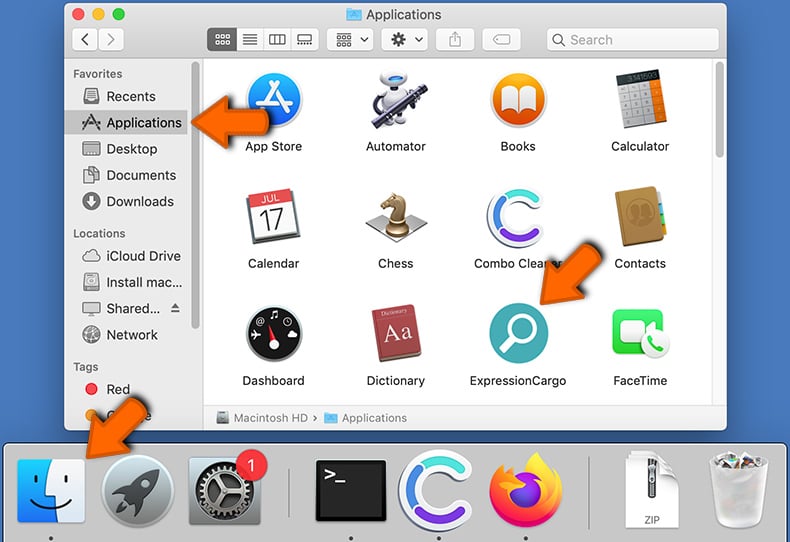
Click the Finder icon. In the Finder window, select "Applications". In the applications folder, look for "MPlayerX", "NicePlayer", or other suspicious applications and drag them to the Trash. After removing the potentially unwanted application(s) that cause online ads, scan your Mac for any remaining unwanted components.
Remove adware-related files and folders
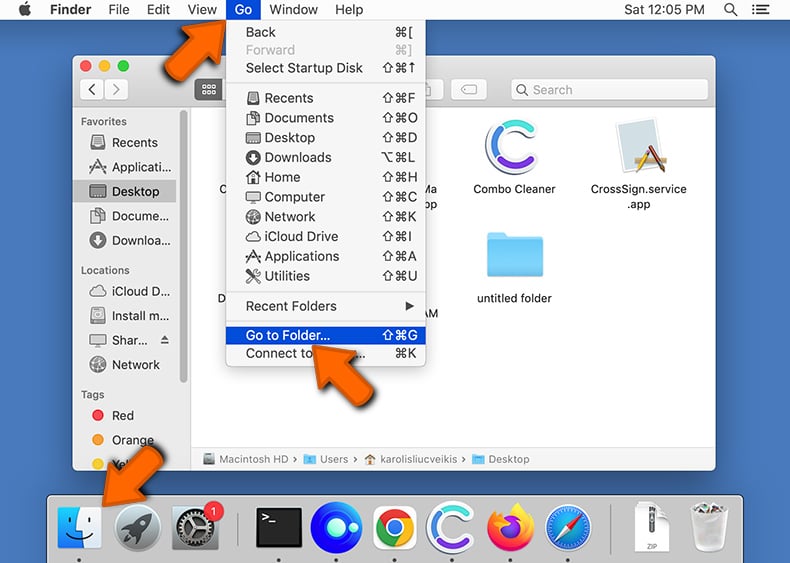
Click the Finder icon, from the menu bar. Choose Go, and click Go to Folder...
 Check for adware generated files in the /Library/LaunchAgents/ folder:
Check for adware generated files in the /Library/LaunchAgents/ folder:
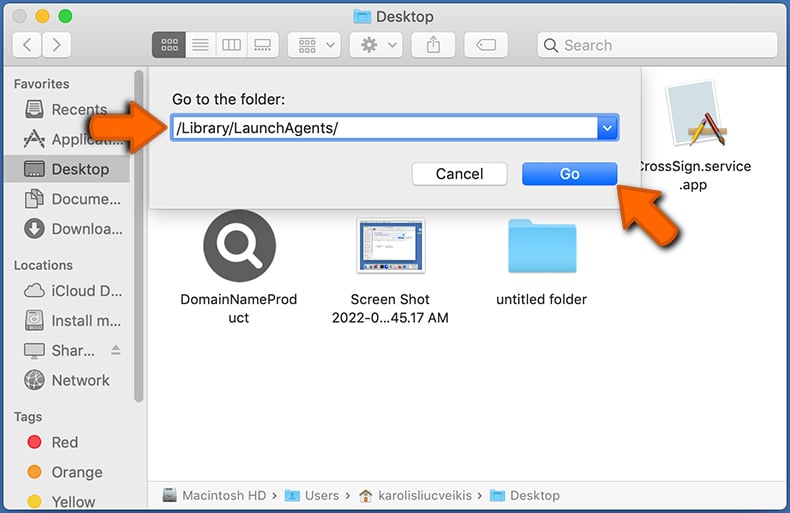
In the Go to Folder... bar, type: /Library/LaunchAgents/
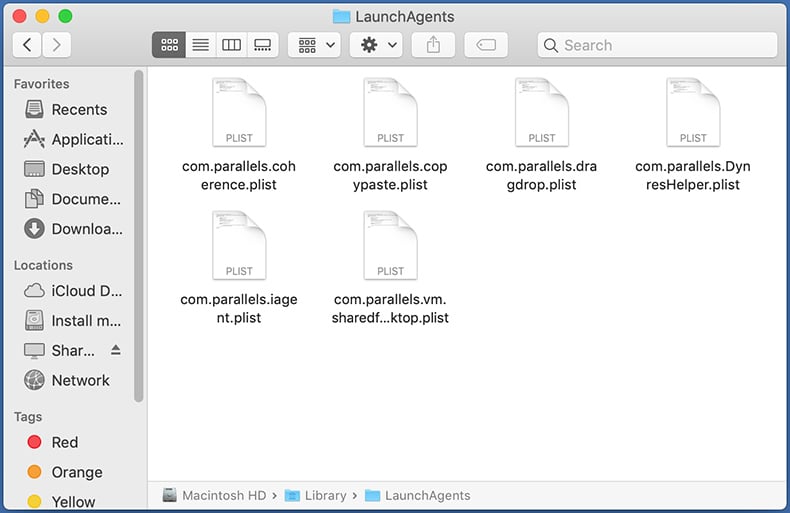
In the "LaunchAgents" folder, look for any recently-added suspicious files and move them to the Trash. Examples of files generated by adware - "installmac.AppRemoval.plist", "myppes.download.plist", "mykotlerino.ltvbit.plist", "kuklorest.update.plist", etc. Adware commonly installs several files with the exact same string.
 Check for adware generated files in the ~/Library/Application Support/ folder:
Check for adware generated files in the ~/Library/Application Support/ folder:
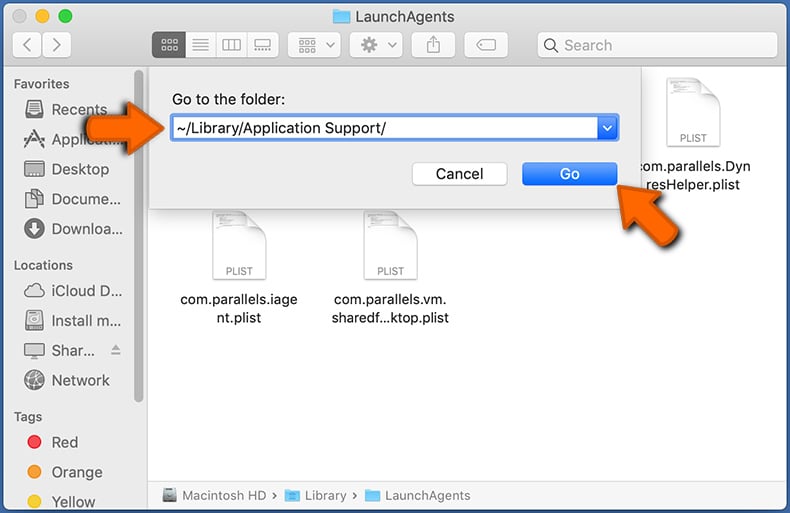
In the Go to Folder... bar, type: ~/Library/Application Support/
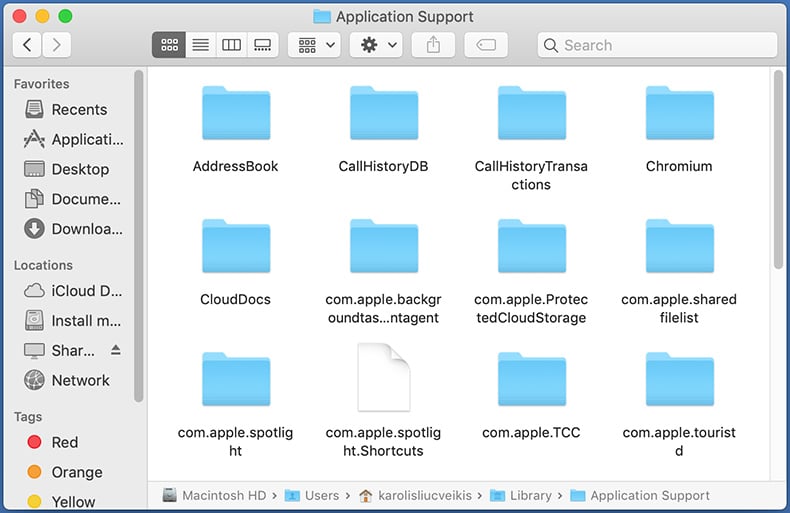
In the "Application Support" folder, look for any recently-added suspicious folders. For example, "MplayerX" or "NicePlayer", and move these folders to the Trash.
 Check for adware generated files in the ~/Library/LaunchAgents/ folder:
Check for adware generated files in the ~/Library/LaunchAgents/ folder:
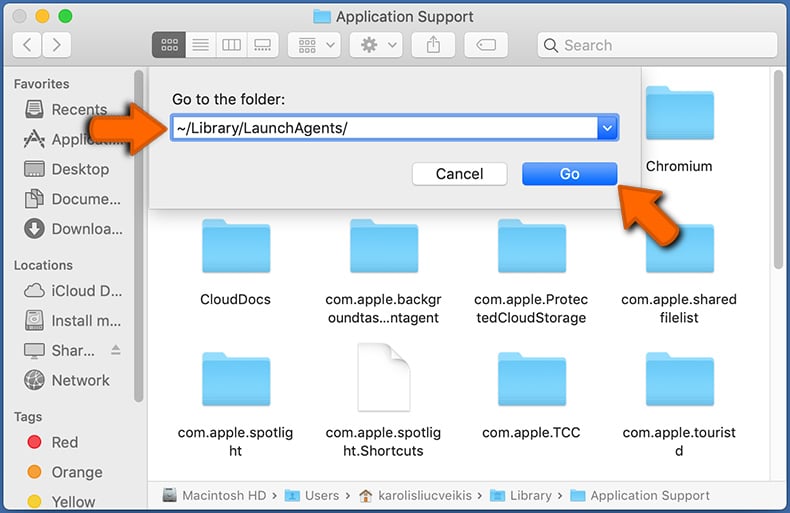
In the Go to Folder... bar, type: ~/Library/LaunchAgents/
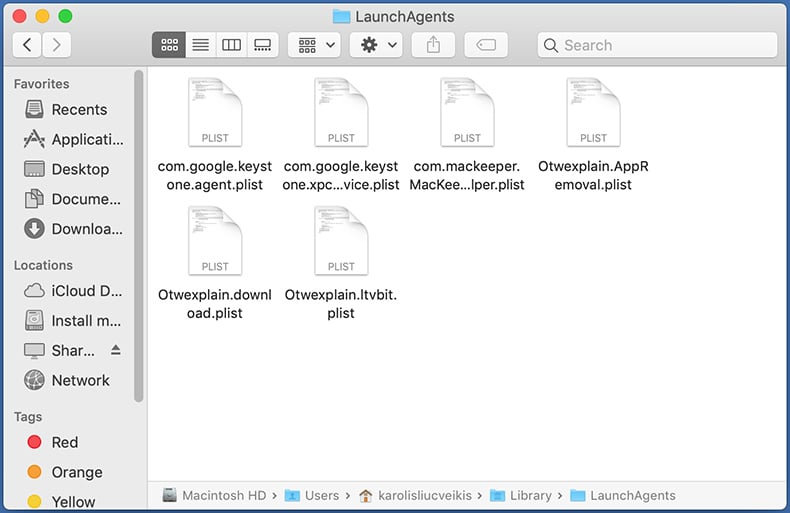
In the "LaunchAgents" folder, look for any recently-added suspicious files and move them to the Trash. Examples of files generated by adware - "installmac.AppRemoval.plist", "myppes.download.plist", "mykotlerino.ltvbit.plist", "kuklorest.update.plist", etc. Adware commonly installs several files with the exact same string.
 Check for adware generated files in the /Library/LaunchDaemons/ folder:
Check for adware generated files in the /Library/LaunchDaemons/ folder:
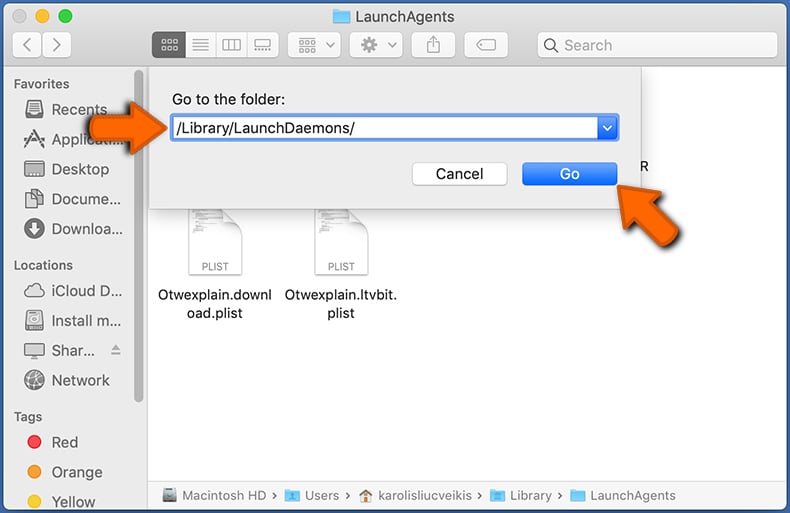
In the "Go to Folder..." bar, type: /Library/LaunchDaemons/
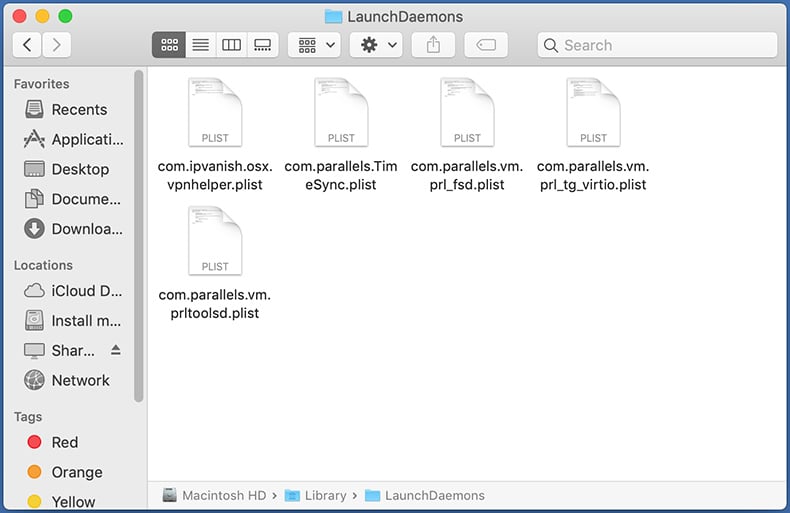
In the "LaunchDaemons" folder, look for recently-added suspicious files. For example "com.aoudad.net-preferences.plist", "com.myppes.net-preferences.plist", "com.kuklorest.net-preferences.plist", "com.avickUpd.plist", etc., and move them to the Trash.
 Scan your Mac with Combo Cleaner:
Scan your Mac with Combo Cleaner:
If you have followed all the steps correctly, your Mac should be clean of infections. To ensure your system is not infected, run a scan with Combo Cleaner Antivirus. Download it HERE. After downloading the file, double click combocleaner.dmg installer. In the opened window, drag and drop the Combo Cleaner icon on top of the Applications icon. Now open your launchpad and click on the Combo Cleaner icon. Wait until Combo Cleaner updates its virus definition database and click the "Start Combo Scan" button.
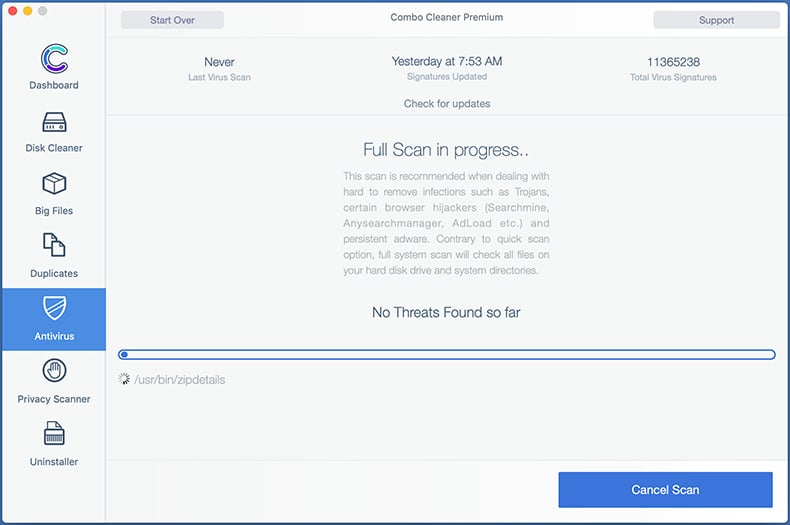
Combo Cleaner will scan your Mac for malware infections. If the antivirus scan displays "no threats found" - this means that you can continue with the removal guide; otherwise, it's recommended to remove any found infections before continuing.
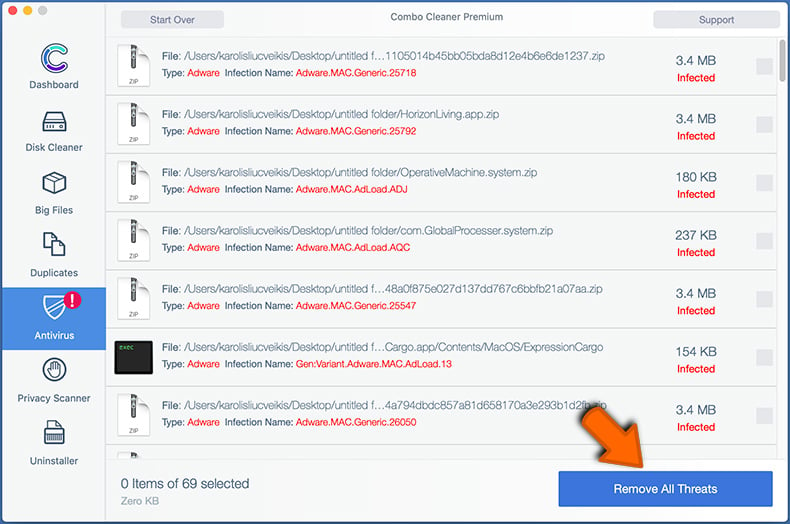
After removing files and folders generated by the adware, continue to remove rogue extensions from your Internet browsers.
Remove malicious extensions from Internet browsers
 Remove malicious Safari extensions:
Remove malicious Safari extensions:
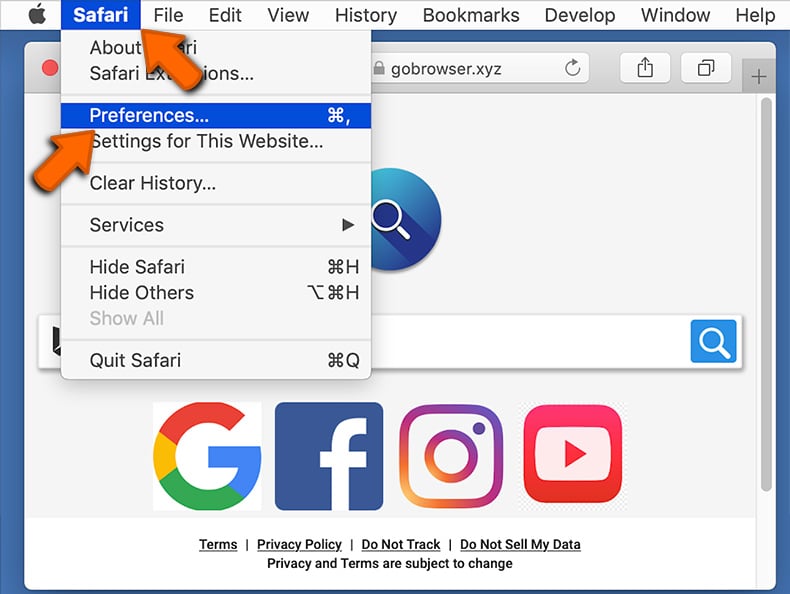
Open the Safari browser, from the menu bar, select "Safari" and click "Preferences...".
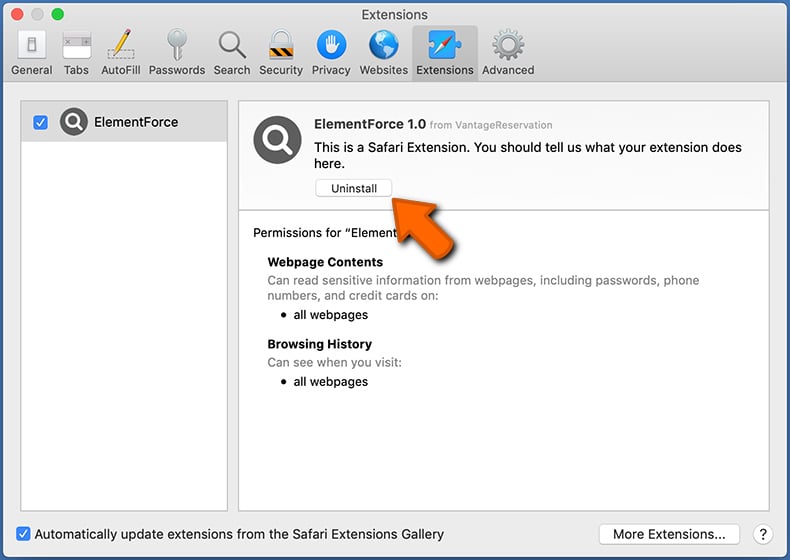
In the preferences window, select "Extensions" and look for any recently-installed suspicious extensions. When located, click the "Uninstall" button next to it/them. Note that you can safely uninstall all extensions from your Safari browser - none are crucial for regular browser operation.
- If you continue to have problems with browser redirects and unwanted advertisements - Reset Safari.
 Remove malicious extensions from Google Chrome:
Remove malicious extensions from Google Chrome:
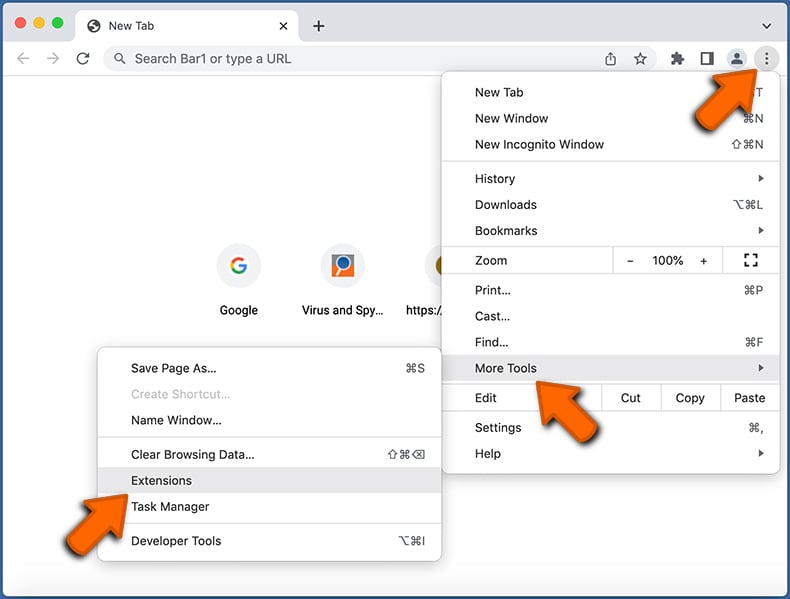
Click the Chrome menu icon ![]() (at the top right corner of Google Chrome), select "More Tools" and click "Extensions". Locate all recently-installed suspicious extensions, select these entries and click "Remove".
(at the top right corner of Google Chrome), select "More Tools" and click "Extensions". Locate all recently-installed suspicious extensions, select these entries and click "Remove".
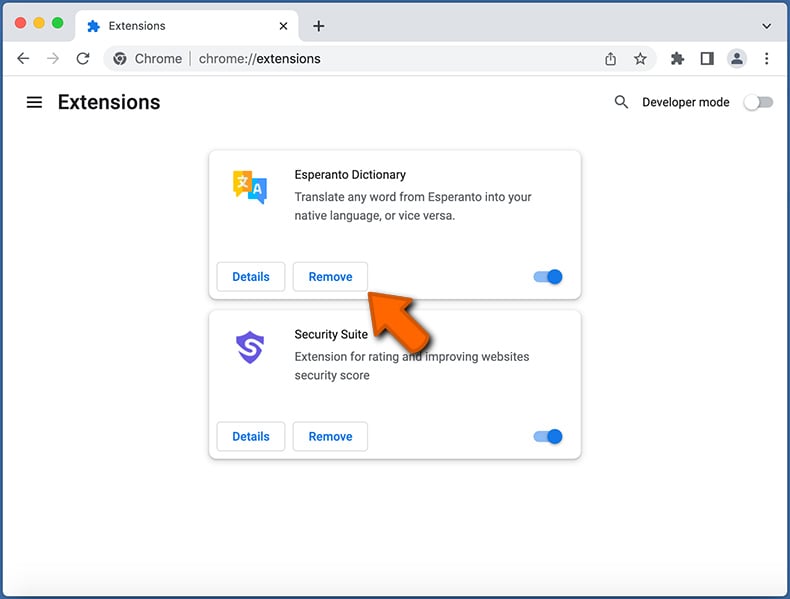
- If you continue to have problems with browser redirects and unwanted advertisements - Reset Google Chrome.
 Remove malicious extensions from Mozilla Firefox:
Remove malicious extensions from Mozilla Firefox:
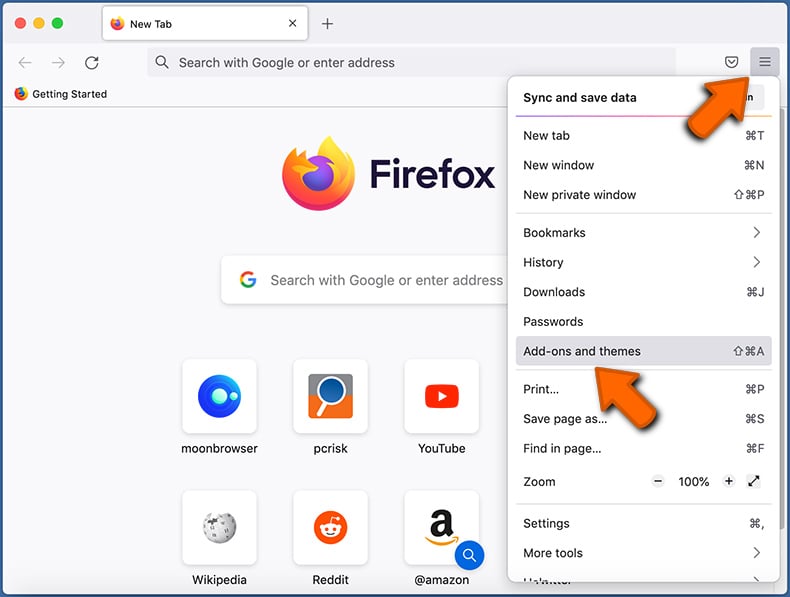
Click the Firefox menu ![]() (at the top right corner of the main window) and select "Add-ons and themes". Click "Extensions", in the opened window locate all recently-installed suspicious extensions, click on the three dots and then click "Remove".
(at the top right corner of the main window) and select "Add-ons and themes". Click "Extensions", in the opened window locate all recently-installed suspicious extensions, click on the three dots and then click "Remove".
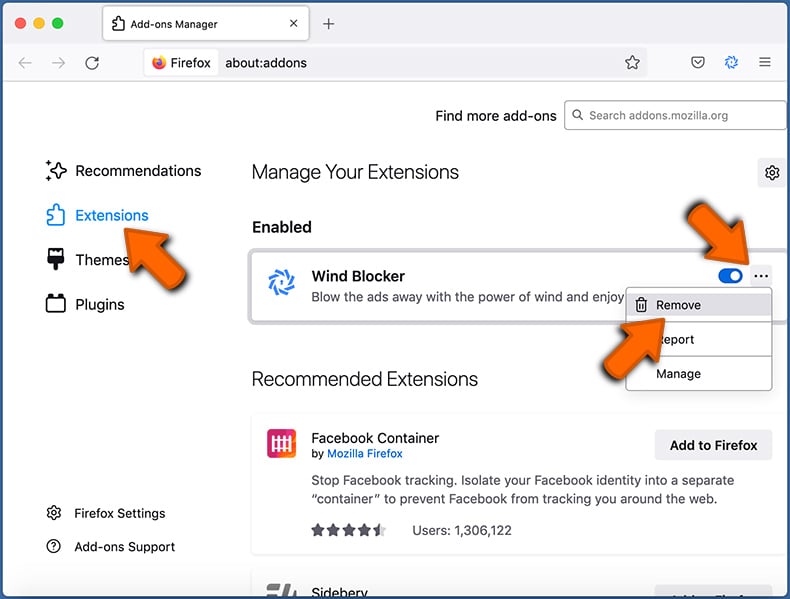
- If you continue to have problems with browser redirects and unwanted advertisements - Reset Mozilla Firefox.
Frequently Asked Questions (FAQ)
What harm can adware cause?
Adware is commonly regarded as undesirable software because it can impede the performance of a computer or device, and its advertisements can be intrusive and bothersome to users.
What does adware do?
Adware functions by displaying advertisements on a computer or mobile device. Additionally, adware has the capability to gather user data and take control of web browsers.
How do adware developers generate revenue?
Developers of adware typically generate income by promoting various products, websites, or services, with the majority of their earnings originating from affiliate programs.
Will Combo Cleaner remove CapitalProjectSearch adware?
Combo Cleaner has the ability to scan a computer for adware-type applications and eliminate them. It is advisable to remove adware automatically, as manual removal may not always be effective.


▼ Show Discussion